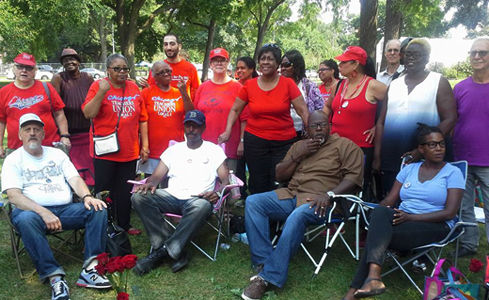
CHICAGO — CPS has announced a plan for Dyett, but not the one fought for by the hunger striking community members. Dyett, according to CPS CEO Forrest Claypool, would open once more as a neighborhood public school but, rather than being global leadership and green technology oriented, would be focused in the arts. The school will house 550 students and first dibs on enrollment will go to children from the neighborhood.
Some saw this as a partial victory, but hunger strikers are not satisfied and say the plan was awarded to entities from outside the community who have been uninvolved with the process. Indeed, the plan announced by Claypool was not one of the three competing proposals announced in December, violating CPS’s own guidelines.
Community members on the south side of Chicago have been engaged in a hunger strike since August 17th in an attempt to save from closure and re-vitalize Walter H. Dyett High School in the neighborhood of Bronzeville. People’s World spoke to a few of the strikers and supporters on the 16th day of the action.
Jitu Brown, National Director, Journey for Justice Alliance and one of the hunger strikers, says he and his fellow community activists have been trying to give Chicago Public Schools (CPS) a “vision for a K through 12 education in this neighborhood since 2009”. In response to what they see as misdirection and stonewalling from officials, this group of parents, teachers and community members developed a plan for what they call the Dyett Global Leadership and Green Technology High School going as far as getting the support of 7 feeder schools to develop curriculum alignment that prepares elementary students for a course of study in green technology.
“Green technology is one of the fastest growing industries in the world and we think it’s important for children of color to see themselves as global citizens rather than minorities. We want our students to be community-centered scholars”.
As the hunger strikers demand answers and action from CPS their health, predictably, begins to waver. As of our conversation, 3 activists had been rushed to the hospital including one from a city budget meeting where Mayor Rahm Emanuel was in attendance.
“We are weakened physically, but spiritually we’re strong. We’re together. We’re not trying to run a charter school… We want CPS to do their job. We want them to care about children on 42nd street the same way they care about children in Rogers Park,” says Brown, referencing the cities discrepancy in treatment between schools on the south side schools and north side.
As I conducted the interview, a school bus filled with children waved and cheered on the strikers. The children’s support brought smiles to the faces of the strikers who sat in lawn chairs in a circle just outside Dyett hardly moving due to their weakened states.
There have been many instances of city officials reaching out to the Dyett hunger strikers since their fast began, but none satisfactory enough to warrant a meal. The Mayor’s Deputy Chief of Staff visited them just days prior, and they had met with the Mayor himself and CPS CEO Forrest Claypool the night before our interview. The meeting was described as “cordial”, but was firm.
“Forrest Claypool is very skilled at talking to people in a way that makes you think he’s hearing you, but we’re not new at this”.
Jeanette Taylor-Ramann was one the hunger strikers who has visited the hospital since the fast, falling during the CPS board meeting a few days ago. Her doctors have recommended that she break the hunger strike, but she’s standing firm with her fellow activists.
Taylor-Ramann is a member of the local school council at Mileson Elementary and has for 21-years since she was 19, “This is not a disengaged parent, this isn’t parent who doesn’t know any better, and this is not a parent who doesn’t care about what happens to young people”.
Her daughter is in 8th grade and she says that she’ll have to travel 16 miles to the next neighborhood public school if they do not win. “That’s a district that doesn’t value black and brown low-income families”.
“No education, no life. That’s what it is for our young people. Chicago wouldn’t have the highest murder rate in the U.S. if our young people were educated and invested in. This is a pure case of them [CPS] building a new Chicago that is not for black and brown young people”.
Community solidarity is key to their victory and a broader movement is forming. A bus of dozens of Chicago Teacher’s Union members and retirees unloaded to give the hunger strikers words of support. They had been travelling around the city visiting state, federal, and officials’ offices and hopefully changing minds on behalf of those who’ve put their bodies on the line.
Brandon Johnson, political director of CTU told the People’s World that they delivered “a very clear messaged to officials that this decision needs to be made now and that this hunger strike has gone on past the point of real danger”. The majority of the officials are reported to have “held the line” and are supportive of “the process”, a process which Johnson, the strikers, and their supporters don’t believe really exists.
“There’s no debate any longer that the political dynamics around education are at a very heightened level. The way it works here is that there are organizations with relationships with officials that get moved to the front of the line and ultimately make a profit off the backs of poor people, black people in particular. It’s another form of patronage”.
Since People’s World interviewed those involved, the fight has seemed to reach a tense new stage. The day after, Wednesday, hunger strikers rushed the stage at a Chicago budget meeting forcing Rahm Emanuel to be hustled out of the building by his security. Thursday, the same day as CPS’s announcement, 16 strikers and supporters received tickets for blocking elevator doors at City Hall.
The hunger strike will continue, according to the activists, until CPS takes up the community’s will.
People’s World will bring you more on this story as it develops.
Photo: Hunger strikers. Patrick J. Foote/PW


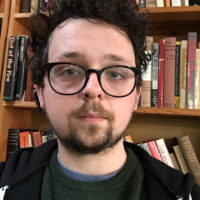
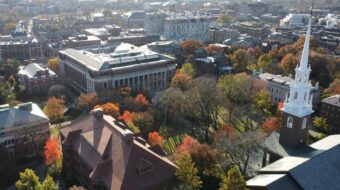
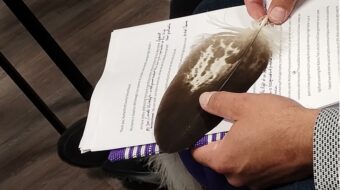
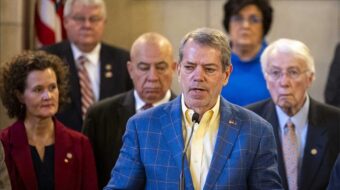






Comments